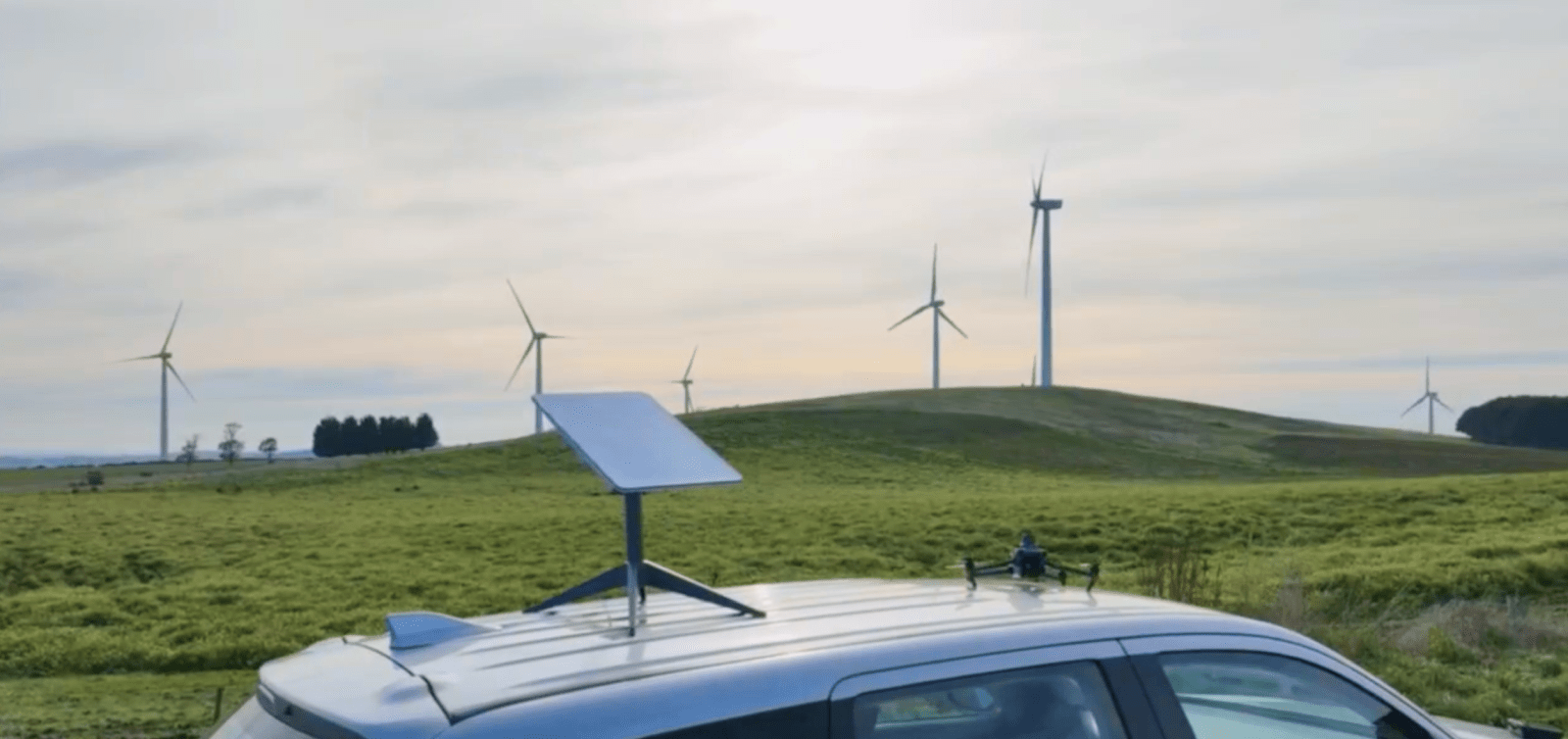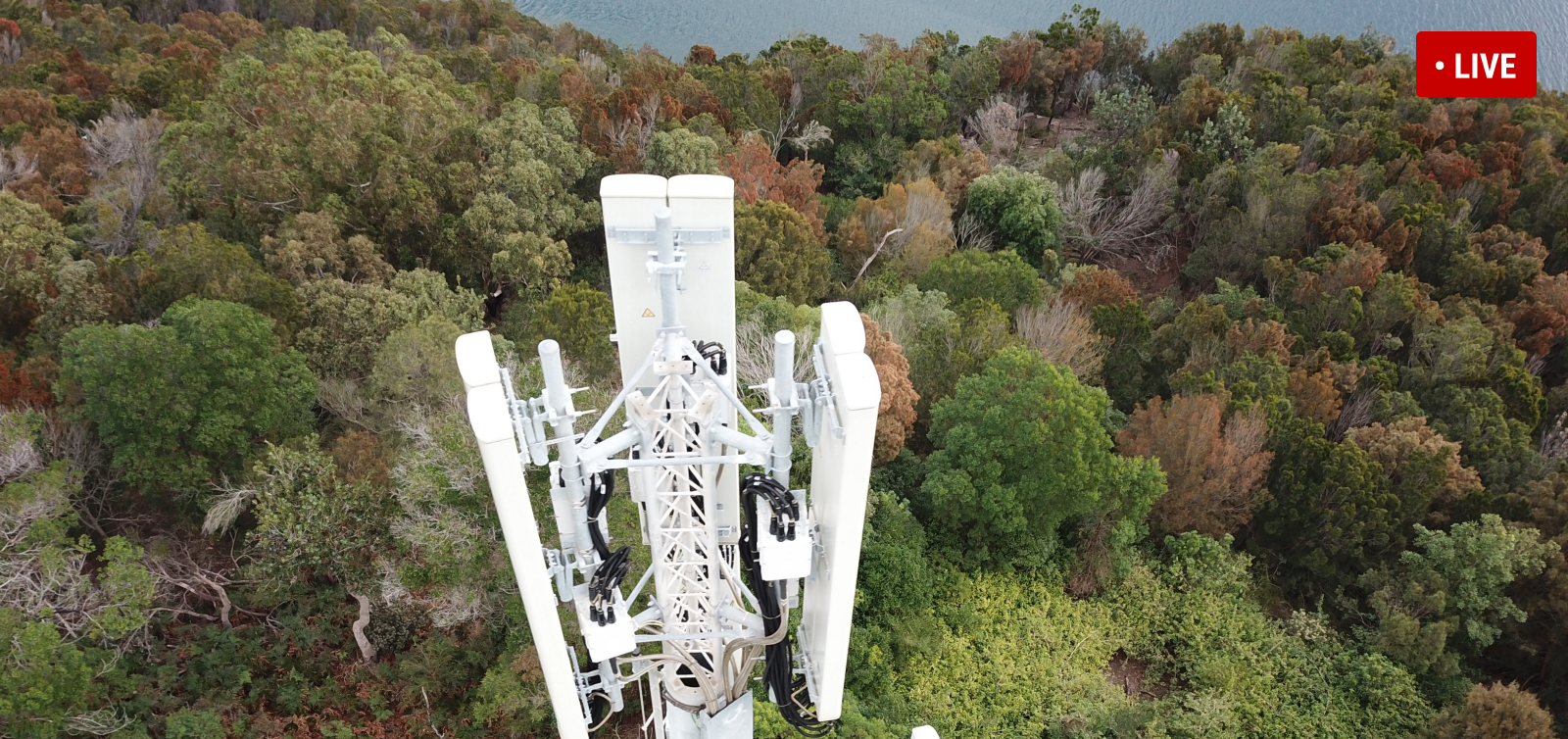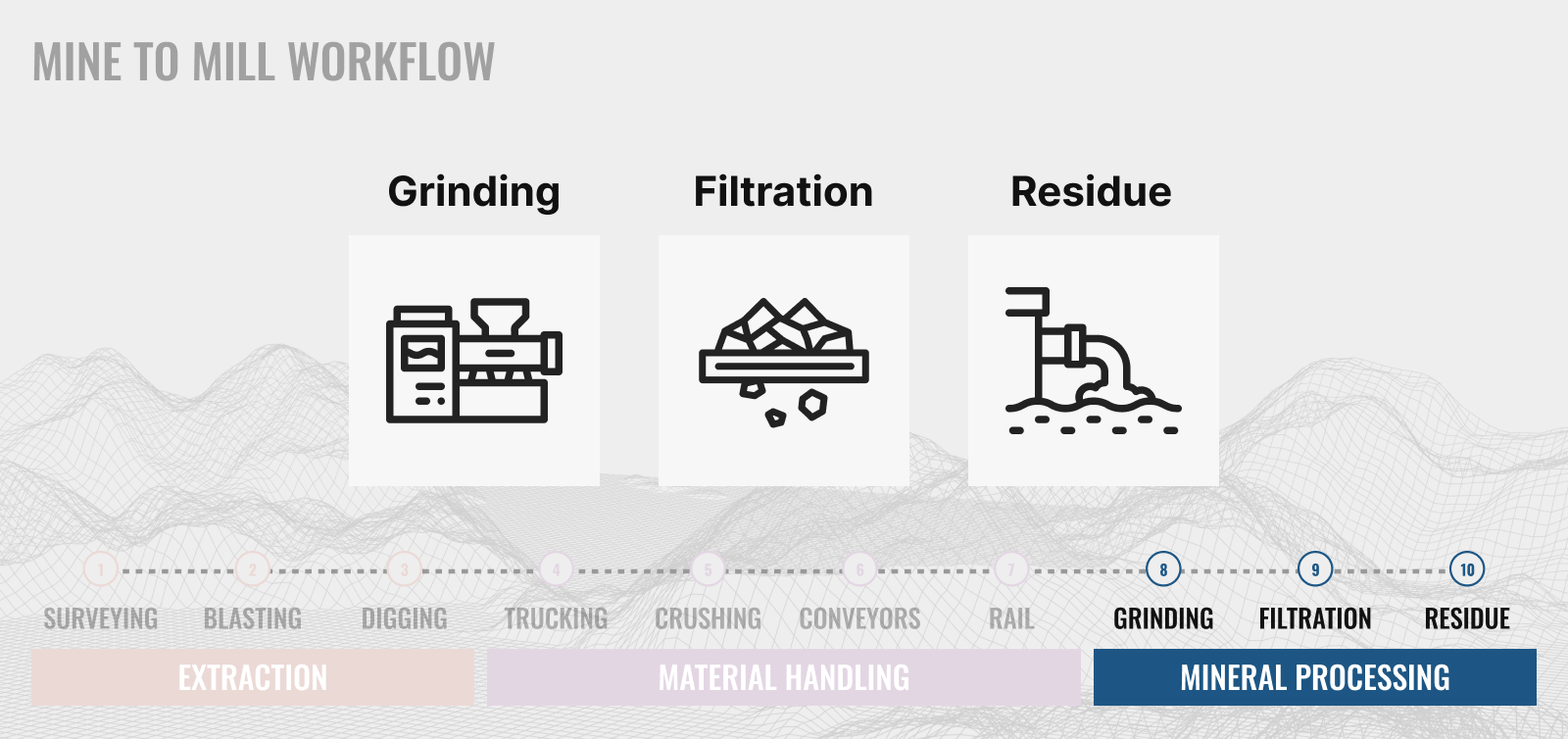Unleash live's goal has always been to connect the field to the office to enable remote operations for faster, more insight-led decisions. Much of the distributed assets around the world do not have access to the internet. Whether it be mine sites, oil pipelines, solar farms or remote wind farms, these high-value assets generally require an operator to build private LTE networks at great cost and with high maintenance requirements. Bringing high speed broadband connectivity to these operations fundamentally changes the way in which they are managed.
Today, remote assets typically require someone to manually visit the site only to find out that there is little work to be done. Even with basic monitoring in place, bandwidth limitations are highly prohibitive and mean there are tight restrictions on what data can be accessed.
Announcing Unleash live's remote intelligent vision and drone operations connected via Starlink
In a world first, Unleash live has successfully connected and navigated drones in real-time via Starlink connectivity. What’s more, we have analysed the drones video stream via our powerful secure cloud AI infrastructure, in real-time, for detailed connected remote inspections of the assets, taking people out of harm's way and removing the need for long and costly travel.
The drone was remotely flown from the Unleash live headquarters, over 200km away from the drone and its mission: pushing the Starlink connection to achieve zero-latency drone control using Unleash live’s Autofly software, and testing two real-time AI apps: 1. 'People counting and Tracking', as well as 2. 'Power line fault detection'.
Using Starlink for drone network access has many advantages, removing any network coverage limitations of 4G/5G, which may limit remote access and remote drone control. When the Starlink satellite array is complete, it is expected that Starlink ground stations will have no geographical limitations, and will even work while attached to a moving vehicle, providing low latency, high bandwidth internet access to anywhere in the world.
With the drone in the air, fully remote navigation was enabled via the Unleash live ‘Autofly Application’. Instantly, drone control was passed to the team in the Unleash live HQ, with full drone navigation and camera gimbal support.
With our 'people counting and tracking' AI App activated, a high resolution live data feed for the number of cumulative people within the drone’s field of view displays in the remote cockpit, updating as the drone flew past our remote test bed.
Starting our power line fault detection model concurrently allowed us to perform a remote assessment of some local distribution power lines, detecting both electrical components like insulators and various faults related to those components. This data feeds directly into Unleash live’s Fusion Atlas, providing a top-down geospatial view of the inspection, with relevant data points captured for future maintenance work planning, and the drone path saved for future power line missions.
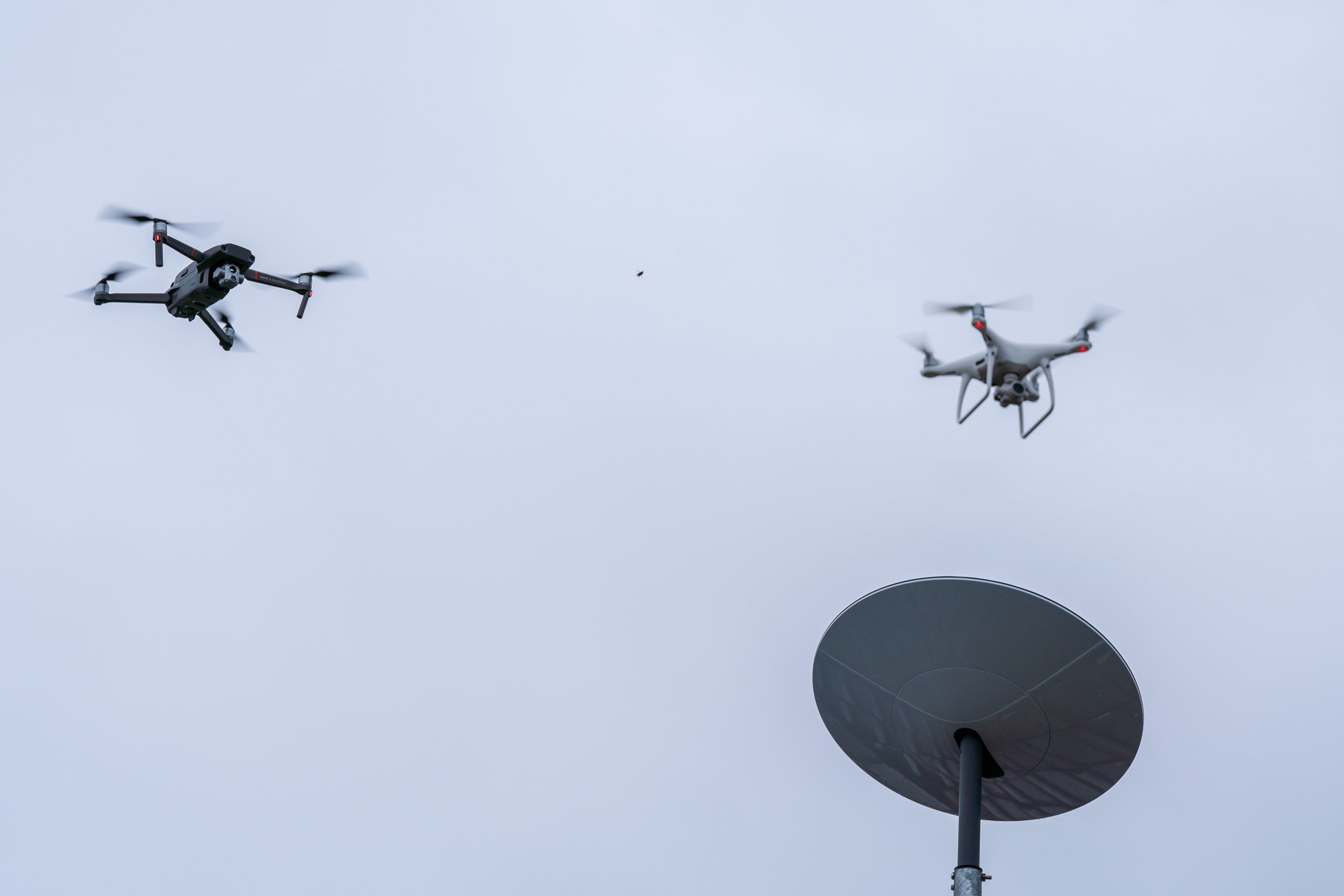
Drones with satellite connections to the internet, powered by Starlink
As more and more Starlink satellites are connected, the opportunities to perform remote drone inspections from any location on earth continues to grow - check out the live Starlink tracking site for more information.
4 reasons Starlink is a game-changer for remote operations.
1. Coverage
With the introduction of a global connectivity solution such as Starlink, infrastructure customers with remote operations around the world now have a connectivity partner in Starlink.
2. Latency
The delay before a transfer of data begins, following an instruction for its transfer, is a crucial component of delivering a solid internet experience. Traditional satellites require data to do a round trip of 70,000 km. Even at the speed of light, the latency experienced by end-users makes the offering unfit for many use cases such as live video streaming. Starlink‘s median latency is 45 milliseconds (ms) which is close to fixed fibre broadband's 14 ms.
3. Disaster Recovery + Reliability
Starlink is about to come out of public Beta and as we wait for more satellites to come online, once all glitches are ironed out, we can expect disaster recovery to be a very simple proposition. Unlike fixed terrestrial connectivity where there are many factors that go into service availability, Starlink’s offering distributed across thousands of satellites is an extremely hardy proposition that is unlikely to experience the same challenges for QoS.
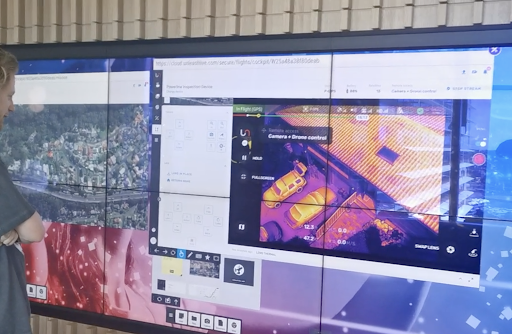
4. Affordability / setup / getting started
Starlink for business is yet to launch, but if the consumer offering is anything to go by, then getting started will be very attractive. Pricing starts at $99 a month, with the hardware costing $499. As long as the hardware has a clear line of sight of the sky, you are good to go. Starlink is a satellite internet constellation operated by SpaceX providing satellite internet access to the planet earth.
Since 2014, several companies have announced working on internet access using satellite constellations in Low Earth Orbit (LEO). SpaceX, OneWeb and Amazon all have launched more than 1,000 satellites each.
So what makes Starlink so distinctive from other satellite internet providers
It’s the sheer scale of the operation and commitment to deploy rapidly. When you're in the business of putting satellites into space, it seriously helps to have a low-cost reusable rocket launch capability. As of early November 2021, SpaceX has some 1,700 satellites orbiting the earth, with a plan to release a total of 12,000 over the next five years. The audacious ambition is a total of 42,000 satellites circling earth. To put that into perspective, only about 4,300 active artificial satellites currently orbit earth, and only 11,670 have ever been launched in all of history, according to the European Space Agency. With this extraordinary commitment comes the unique low earth attribute of these satellites, which are typically geosynchronous (Geostationary), share their bandwidth, and orbit at approx. 35,000 kilometres (22,000 miles) above the Earth’s surface. LEO satellites orbit only some 550 kilometres (340 miles) above Earth's surface.
Getting started
Contact us for deploying Starlink with Unleash live remote video intelligence and drone control on your assets. You can be up and running in a matter of weeks.



